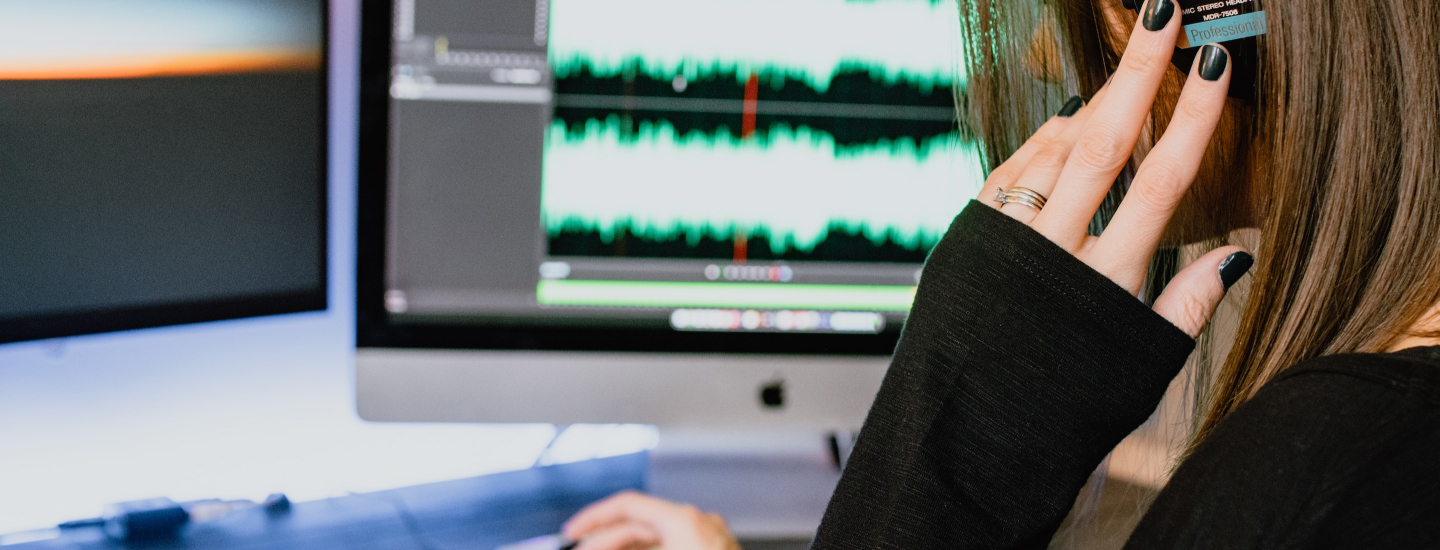Your cart is currently empty!

Save Time and Effort: How to Create Engaging Content by Talking About Your Products or Services
Reading Time: 6 minutesAuthor:
Are you struggling to create engaging content for your business?
Do you find yourself spending hours writing and editing, only to end up with something that doesn’t quite hit the mark?
If so, you’re not alone. Many business owners struggle with creating quality content. They are very good at what they do. Writing? Not so much.
But what if we told you there’s an easy way to create content like blog posts that is engaging and informative?
You can create content quickly and easily by recording audio about your products or services. This approach saves time and produces high-quality content that resonates with your audience. And audio content can be repurposed in multiple ways.
What we’ll describe here is similar to the methodology we described in Six Steps to Publishing an eBook Lead Magnet Without Writing a Word (Almost).
Why Record Audio for Your Content?
There are several reasons why recording audio can be a great option for creating content, especially blog posts.
First, it’s a time-saver. Writing a blog post can be daunting if you’re not confident in your writing skills, but most people are comfortable speaking about their business or industry. By recording audio, you can quickly and easily create a draft for your content without spending hours writing and editing.
And recording audio has other benefits. For example, it helps you create more authentic content. When you’re speaking naturally, you’re more likely to convey your passion and enthusiasm for your business or industry. This can build trust with your audience and make them more likely to engage with your content and your brand.
Finally, recorded audio can be repurposed in multiple ways.
How to Record Audio for Your Content
Recording audio for your blog posts is easy. All you need is a microphone and some recording software. Audacity is a good choice, and it’s free. In fact, you don’t even need this. If you’re on a budget, you can use the voice recording app on your smartphone. As you get more comfortable with this approach and see its value, you can invest in a quality microphone and recording software for better audio quality.

After you’ve finished recording, it’s time to transcribe your audio into text.
Several transcription services are available online. We like Rev.com. Or you can do it yourself using speech-to-text software. Otter.ai is a good tool for this.
Once you have your transcription, you can edit and refine it into an informative and engaging blog post. Or many reasonably priced editing resources are available from gig platforms like Fiverr or Upwork.
Once you have your equipment set up, it’s time to start recording.
Tips for Creating Engaging Audio Content
When recording audio for your content, there are a few things to remember to ensure your content is engaging and informative.
Choose a topic that your audience will find interesting and relevant. This could be a topic that solves a problem for your customers or something that showcases your expertise in your field.
Speak naturally and conversationally. Imagine you’re speaking to a friend rather than delivering a formal presentation. This will help to make your content more engaging and relatable.
Preparing an outline in the form of questions and having a friend interview you can be useful. Speaking with someone you trust improves your comfort, resulting in a more natural delivery, and it allows your passion for your business to shine, supporting your authority. Or you can hire an expert like Michael Whitehouse (affiliate link), who will interview you and take care of the technical side of the recording.

Your audience wants to connect with you on a personal level, so don’t be afraid to show your personality and sense of humor. This will help to make your content more memorable and shareable.
Finally, don’t let perfection get in the way of done. Content like this is often better if it’s not perfect. People buy people, and your imperfections tell your audience that you are a normal person that they can relate to.
How to Repurpose Audio Content for Increased Reach and Engagement
Repurposing audio content is an effective way to extend the reach of your content marketing efforts. When you create content by recording audio about your products or services, you can repurpose that content in several ways. Here are some ideas to get you started.
You can use your audio content to create a podcast. If you have several recordings on similar topics, you can compile them into a series of podcast episodes. This allows your audience to consume your content in a different format and can attract new listeners who prefer podcasts over blog posts.

You can also use your audio content to create videos. Adding visual elements to your audio allows you to create engaging video content that can be shared on social media platforms like YouTube or Instagram. There are a number of online resources that make this easy. Invio.io is one. Even Canva can do this for you. This allows you to reach a wider audience and can help to increase your brand’s visibility.
Another use for the audio/video combination is on-demand webinars. Using a service like eWebinar, you can create on-demand webinars that demonstrate your expertise, which builds your authority and attracts high-quality prospects. In addition, on-demand webinars are an excellent way to build your email list. Your list is a powerful and efficient channel you can use to nurture prospects. It’s also one of the two digital assets that you own. (Your website is the other one.)
You can use your audio content to create social media posts. By taking key quotes or snippets from your audio, you can create short and engaging posts that can be shared on social media platforms like Twitter or LinkedIn. These are sometimes called Audiograms. Headliner.app is an excellent, easy-to-use tool for this. Their tagline says it all, “Go from audio to audience.”
You can also cut excerpts from the transcript created for the blog post and repurpose them to create Social Media posts that will interest your audience and further reinforce your authority.
Link your social media posts back to your website, and you will keep your brand top of mind with your audience and drive traffic back to your website.
Repurposing content created by recording audio about your products or services will help you to extend the reach of your content marketing efforts. By repurposing your content into different formats, you can attract new audiences, increase engagement, and drive traffic back to your website.
Creating Engaging Content by Talking About What You Love
Recording audio about your products or services is a great way to save time and create high-quality content, blog and social media posts, on-demand webinars, and more. Follow the tips outlined in this article, and you will soon create engaging and informative content to attract new customers and keep existing customers engaged with your brand.
So, next time you struggle with content creation, try recording your thoughts and ideas instead of being anxious about something you aren’t good at. You will be surprised at how effective it can be!
Related Posts
Principles for Lasting Connections
A practical exploration of relationship marketing.
5 Proven Copywriting Frameworks
Five copywriting frameworks to boost your B2B content marketing.
Author: James Hipkin
Since 2010, James Hipkin has built his clients’ businesses with digital marketing. Today, James is passionate about websites and helping the rest of us understand online marketing. His customers value his jargon-free, common-sense approach. “James explains the ins and outs of digital marketing in ways that make sense.”
Use this link to book a meeting time with James.

